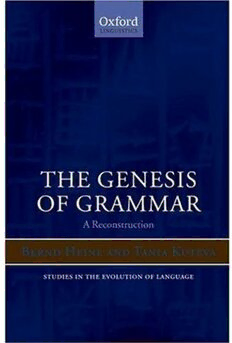
The Genesis of Grammar: A Reconstruction (Studies in the Evolution of Language) PDF
437 Pages·2007·2.826 MB·
Most books are stored in the elastic cloud where traffic is expensive. For this reason, we have a limit on daily download.
Preview The Genesis of Grammar: A Reconstruction (Studies in the Evolution of Language)
Description:
"This book reconstructs what the earliest grammars might have been and shows how they could have led to the languages of modern humankind."Like other biological phenomena, language cannot be fully understood without reference to its evolution, whether proven or hypothesized," wrote Talmy Giv?n in 2002. As the languages spoken 8,000 years ago were typologically much the same as they are today and as no direct evidence exists for languages before then, evolutionary linguists are at a disadvantage compared to their counterparts in biology. Bernd Heine and Tania Kuteva seek to overcome this obstacle by combining grammaticalization theory, one of the main methods of historical linguistics, with work in animal communication and human evolution. The questions they address include: do the modern languages derive from one ancestral language or from more than one? What was the structure of language like when it first evolved? And how did the properties associated with modern human languages arise, in particular syntax and the recursive use of language structures? The authors proceed on the assumption that if language evolution is the result of language change then the reconstruction of the former can be explored by deploying the processes involved in the latter. Their measured arguments and crystal-clear exposition will appeal to all those interested in the evolution of language, from advanced undergraduates to linguists, cognitive scientists, human biologists, and archaeologists.
See more
The list of books you might like
Most books are stored in the elastic cloud where traffic is expensive. For this reason, we have a limit on daily download.
